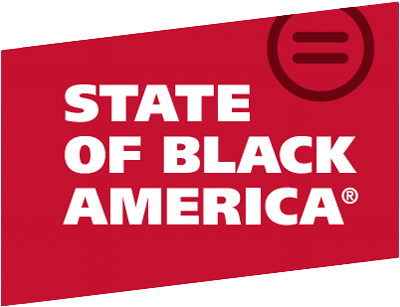Despite the wide-ranging devastation of the COVID-19 pandemic, particularly within communities of color, we feel a sense of optimism that we have not felt in over a year. Our new administration explicitly acknowledged the existence of systemic racism and white supremacy in American society and launched one of the most ambitious public health efforts of the last century: the emergency vaccination of more than 300 million U.S. citizens. Since January 2021, more than 139 million Americans have been vaccinated, and the American Rescue Plan has been passed. There is hope, finally, that Americans will be able to resume many of their pre-pandemic activities and that our entire society will begin to recover from the losses of the last year.
However, our hope is tempered.
Of the more than 598,000 COVID-19 deaths in the United States, a disproportionate number were Black, Native, Latino, and Pacific Islander Americans. And because vaccination strategies have lacked a specific focus on equity, COVID-19 disparities have now extended to vaccination rates. As of mid-May, Black Americans, who are 12.4% of the U.S. population, represent 8.5% of vaccinations; Latino Americans, who make up 17.4% of the population, represent 11.6% of vaccinations; and white Americans, who are 61.2% of the population, represent 65.1% of those fully vaccinated.
Following a year of excess pandemic deaths, job loss, residential evictions, food insecurity, police violence, and inequities in education and health care access due to the digital divide, Black Americans are experiencing “community bereavement.” We need a restorative justice plan that ensures access to COVID-19 vaccinations and overall health care and creates opportunities for improvements in education, employment, and living conditions.
Discussions regarding racial disparities in COVID-19 vaccine uptake have focused heavily on vaccine hesitancy and medical mistrust. Hesitancy and mistrust reflect lived experiences in health care settings and are rooted in structural racism, which is the totality of the systems, policies, and practices that have consistently placed white Americans in a position of advantage and people of color in positions of disadvantage. The same structural and systemic forces that put people of color at increased risk of COVID-19 infection and its complications also contributed to differences in health status and access to appropriate health care services generations before the pandemic began. Addressing inequities in negative social determinants and disease outcomes is why we and our community partner colleagues at the Johns Hopkins Center for Health Equity have directed critical research programs, developed innovative programs, trained future leaders, and advocated with policymakers for more than a decade.
Health equity leaders are changing the narrative regarding racial disparities in COVID-19 vaccine uptake. Attitudes toward COVID-19 vaccination have improved — and most dramatically among Black Americans. In January 2021, 34% of Black Americans and 20.1% of white Americans responding to the U.S. Census Household Pulse Survey reported that they would definitely or probably not get a COVID-19 vaccine. However, by the end of April 2021, those numbers decreased to 12.4% and 12%, respectively. Therefore, remaining disparities in COVID-19 vaccination rates cannot be attributed primarily to differences in vaccine acceptance; they indicate inequities in vaccine distribution and access — manifestations of structural racism.
We’re also changing the narrative regarding health disparities in general by ensuring that people understand that addressing these inequities isn’t solely an individual responsibility, but rather a societal one. The multi-faceted nature of health disparities requires cross-sector partnerships using restorative justice approaches to address the legacies of structural racism. Such partnerships must include trusted community and faith-based organizations and policymakers as well as the education, public health, health care, community development, and food sectors. These partnerships have served a vital role in meeting the needs of communities of color during the pandemic, from providing relevant COVID-19 information and advocating with policymakers to setting moratoriums on evictions and providing food, educational, and social support for older adults and families with children.
At the Johns Hopkins Urban Health Institute, we focus on advancing health equity in Baltimore by facilitating partnerships. We recently held an online symposium, “Building and Restoring Health in Communities: Understanding and Leveraging Partnerships To Advance Health Equity,” convening faculty, students, community residents, and leaders all across Baltimore who are working to advance health equity in our community. We organized the symposium around the topics of employment, education, food, and housing as prerequisites for achieving optimal health. Many panelists highlighted that equitable access to these basic necessities is a fundamental human right. Here are some reminders and new lessons from our discussions.
- Relationships in these partnerships must be built on mutual respect, trust, sharing of power, responsibility, and accountability.
- People must be valued for their humanity, including their cultures and lived experiences.
- Partnerships should amplify and advocate for the voices of marginalized groups.
- Building agency and capacity from a foundation of existing strengths is paramount.
- Data and evidence are critical to informing and evaluating programs and policies.
- Solutions should focus on systems and root causes.
- We must create supportive and nurturing environments at work, school, home, and in communities.
- Health must be viewed holistically and as a life-long journey.
- Whenever possible, our approaches should be proactive — not reactive — using what we know from research and past experiences to inform decisions, policies, and practices.
- Achieving health equity is not a zero-sum game. Health equity efforts target those who need them most, but typically benefit many others.
Health care was discussed as a fundamental thread woven throughout all the other concerns, with the understanding that health care institutions must determine their role as cross-sector partners and become anchor institutions that promote health equity not only within their own walls but within their surrounding communities.
Dr. Lisa Cooper’s book, Why Are Health Disparities Everyone’s Problem? provides evidence-informed insights on how we can all be a part of the solution. Events of the past year have brought greater public awareness of the impact of structural racism on health disparities, and we can leverage this awareness for greater action. Although more work is needed to restore our communities to health and wholeness, these solutions will come as we commit to working together toward a common vision of health equity — when every person in our nation and around the world has the opportunity to attain their full health potential.





